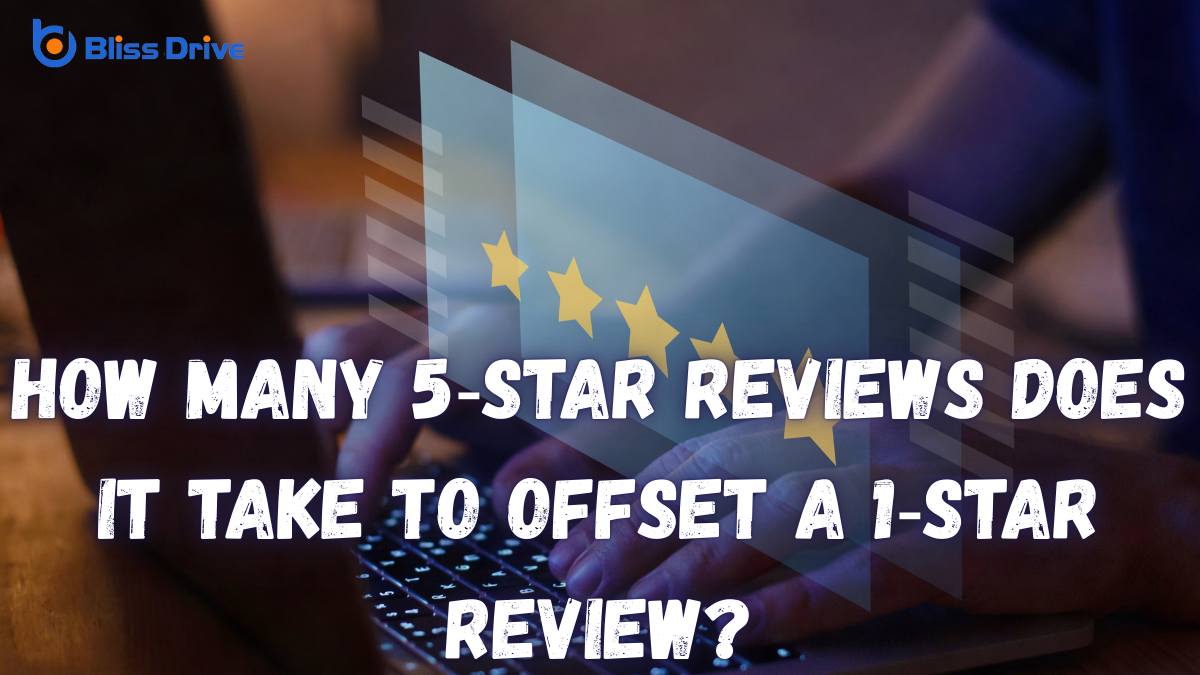Digital Marketing Services
Learn More About Us

I've often wondered about the power dynamics between a 1-star review and multiple 5-star reviews. How many glowing endorsements does it really take to counteract just one scathing critique? The answer isn't as straightforward as one might think. There are psychological factors and algorithmic considerations at play that make it a complex issue. Let's explore what it takes to maintain a positive online reputation in the face of negativity.
When we explore the psychology behind online reviews, it becomes clear that they’re more than just opinions; they’re social proofThe influence that other people’s actions have on one's own behavior, often seen in likes, shares,... that influences our decisions.
I’ve noticed that when I read reviews, I’m often looking for validation of my choices. It’s fascinating how a simple star rating can sway our perception of a product or service.
We tend to trust the experiences of others, especially when we can’t directly assess the quality ourselves. A 1-star review stands out because negativity feels more impactful and memorable.
It’s part of human nature to focus on avoiding bad experiences. Meanwhile, multiple 5-star reviews collectively reassure us, creating a sense of safety in numbers.
Understanding this helps us navigate the complex world of online feedback.

Although we often focus on the number of stars in a review, it’s crucial to understand how review algorithms affect those ratings.
These algorithms don’t just average scores; they weigh factors like review recency, reviewer credibility, and consistency. Imagine an algorithm prioritizing a recent, detailed 1-star review over older, generic 5-star ones. It can skew the overall rating, making a product seem worse than it is.
You might wonder why. Well, algorithms aim to reflect current, reliable feedback. They might even filter out reviews deemed suspicious or biased.
This process makes certain ratings a little more trustworthy, but can also cause confusion when ratings fluctuate unexpectedly.
Negative reviews can seriously impact a business's reputation and bottom line. As a consumer, I've often hesitated to try a new place after reading a few harsh comments.
It’s surprising how one negative review can outweigh several positive ones in my mind. When I see a 1-star review, it raises doubts about quality, service, or reliability, even if it's just one person's experience.
For businesses, a single bad review can leadA potential customer referred by an affiliate who has shown interest in the product or service but h... to a ripple effect—fewer customers, reduced revenue, and even long-term damage to their brand imageThe perception of a brand in the minds of consumers, shaped by advertising, word of mouth, and exper....
In today’s digital world, where every rating counts, it's essential for businesses to address these negative reviews promptly. Understanding their impact helps me empathize with businesses working to maintain a positive online presence.
I've found that encouraging positive feedback involves a few key strategies that can really make a difference.
First, offering incentives can create memorable experiences that customers want to share.
Additionally, engaging directly with your audience and showcasing success storiesA feature on platforms like Instagram and Facebook where users can post photos and videos that disap... not only builds trust but also encourages others to leave glowing reviews.
Creating an environment that promotes positive feedback is essential for any business aiming to enhance its reputation. I’ve found that when you incentivize positive experiences, customers are more likely to share their satisfaction.
Simple gestures like offering discounts, exclusive deals, or loyalty points can motivate them to leave glowing reviews. It’s important to guarantee these incentives don’t feel forced or insincere. The goal is to genuinely enhance their experience, making them keen to share it with others.
Consider this: when a customer feels valued and appreciated, they’re naturally inclined to reciprocate with positive feedback. Encourage your team to provide exceptional service, creating memorable interactions.
This way, you’re not just asking for reviews; you’re fostering an authentic connection that translates into enthusiastic endorsements.
How often do we genuinely connect with our audience, inviting them to share their thoughts and experiences? I’ve found that fostering open dialogue is key.
By actively listening and responding to feedback, we create an environment where people feel valued and heard. Encourage your audience to leave reviews by making the process simple and accessible. Share prompts or questions to guide their thoughts, and express gratitude for their input.
It’s essential to be proactive in addressing concerns and showing appreciation for positive feedback. This not only builds trust but also encourages others to share their positive experiences.
Regularly engaging with your audience can transform casual interactions into lasting relationships, ultimately cultivating a community that champions your brand and contributes to an abundance of 5-star reviews.
When we highlight success stories, we not only celebrate our achievements but also inspire others to share their positive experiences.
Sharing stories of satisfied customers helps potential clients see the real value we offerThe specific product or service being promoted by affiliates.. It's not just about saying we're great; it's about showing it through the voices of those who've experienced it firsthand.
By showcasing these stories, we create a ripple effect, encouraging others to add their voices to the chorus of positive feedback.
I’ve found that featuring endorsements on social media or our website gives them more visibility.
When people see genuine stories, they're more inclined to trust us.
Remember, each success story is proof of what we can achieve together.
Let’s embrace and share these narratives to encourage more 5-star reviews.

Though it may seem challenging, transforming a 1-star review into a 5-star one isn't only possible but also achievable with the right strategy.
I've seen this firsthand through various case studiesIn-depth analyses of specific instances or examples to highlight success stories or lessons learned..... One approach involved promptly addressing customer concerns. By reaching out personally and offering genuine solutions, businesses can often turn disgruntled customers into loyal advocates.
In a memorable example, a small café faced a scathing review about slow service. The owner invited the reviewer back for a complimentary meal, ensuring a swift and delightful experience.
The personal touch and willingness to improve left the customer impressed, resulting in an updated 5-star review. This illustrates how empathy, communication, and a proactive approach can dramatically shift perceptions and enhance online reputation.
Managing your online reputation isn't just about responding to reviews; it's a continuous commitment to building trust and engagement with your audience.
From my experience, it’s essential to understand that each interaction is an opportunity to shape perception. When you receive feedback, whether positive or negative, think of it as a chance to connect. Acknowledge concerns promptly and genuinely.
Transparency fosters trust, and when people see you addressing issues head-on, they feel valued. This approach not only mitigates the impact of negative reviews but also strengthens your brand.
Remember, consistency in your messaging and actions reinforces your credibility. Every response should reflect your brand’s values, showing customers that you’re listening and willing to improve.
Building a stellar reputation takes dedication.
To keep your ratings high, I recommend focusing on three key areas.
First, encourage positive engagement by asking satisfied customers to leave reviews.
Second, respond to criticism effectively by addressing concerns and showing you care, while also implementing continuous improvements based on feedback.
Fostering positive engagement is essential for maintaining high ratings, as it directly influences customer perceptions and satisfaction.
I've found that creating a welcoming environment encourages customers to share their positive experiences. When they feel valued, they're more likely to leave glowing reviews. One effective strategy I've used is to actively listen and respond to feedback, showing genuine interest in their opinions. Personalizing interactions can go a long way, making customers feel special and appreciated.
Another tip is to incentivize reviews through promotions or discounts. It encourages happy customers to voice their satisfaction.
Although receiving negative feedback can be disheartening, it’s essential to respond to criticism effectively to maintain high ratings. When I encounter a critical review, I take a deep breath and approach it calmly.
First, I acknowledge the customer's experience, showing empathy and understanding. This lets them know their voice matters. I try to address their concerns honestly and offer a solution if possible. Clear communication is vital; I avoid defensive language, which could worsen the situation.
Next, I follow up privately to resolve any lingering issues, demonstrating commitment to improvement. This approach not only helps mend the relationship with the dissatisfied customer but also showcases to others that I care about delivering quality service.
While working to maintain high ratings, I focus on implementing continuous improvements to guarantee my business meets and exceeds customer expectations.
I regularly gather feedback, not just from reviews but through direct customer interactions. By actively listening, I identify areas needing attention and adapt swiftly. I also encourage my team to share their insights, fostering an environment where innovation thrives.
It’s essential to stay informed about industry trends and incorporate best practices to remain competitive. I set measurable goals and track progress to confirm changes yield positive results.
In managing online reviews, we can't underestimate the power of a single 1-star review. It can take multiple 5-star reviews to counteract its impact. So, let's actively encourage our happy customers to share their positive experiences. By doing so, we can maintain a strong online reputation and guarantee that one negative review doesn't overshadow the good. Remember, effective reputation managementStrategies used to influence and control a business's online reputation. isn't just about damage control—it's about consistently celebrating and amplifying positive feedback.
